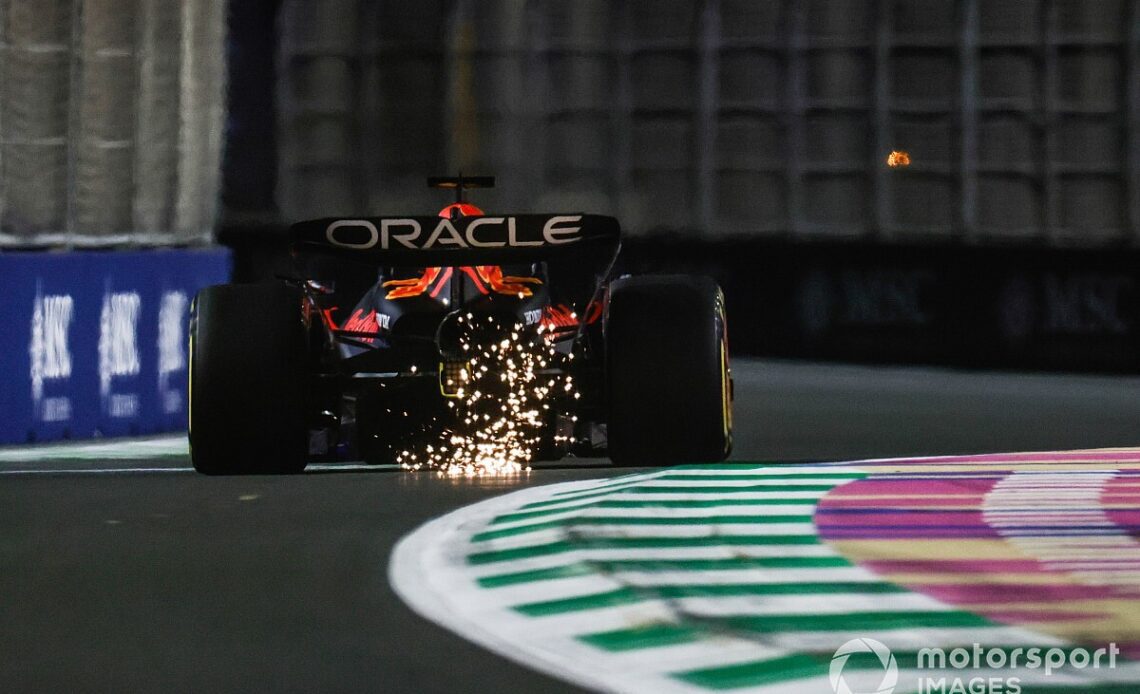As rivals try to get to the bottom of what Red Bull has done to produce so dominant a car as its 2023 challenger, there has been an increased focus on the gains coming from it having such a stable platform.
Because while the car is producing good levels of downforce with brilliant efficiency, and a powerful DRS, one aspect not to be overlooked is the way that the car maintains its ride in corners.
There is a growing belief that it is down to clever mechanical aspects of the car and its suspension systems that Red Bull can run closer to the ground than others for maximum downforce, without it risking porpoising, damaging the plank, nor facing compromises when turning.
As well as the performance gains that come from this characteristic, the consistency throughout the lap also helps increase driver confidence in how the car is going to behave under braking, while cornering and under acceleration – therefore allowing Max Verstappen and Sergio Perez to push harder.
Monaghan says that there are numerous aspects beyond aerodynamics that have come together to make the RB19 so strong.
Asked by Motorsport.com about how important the ride and consistent platform was for the package as a whole, Monaghan said: “It is a contributing factor, and you have to weigh all of those aspects.
“It’s a significant player in the performance of the car, but it has to merge with the other aspects.
“However, your aero map is developing, you have to be able to operate like that on track, and it has to be a viable proposition on track.
“Equally, you need an engine which is well accommodated and you can operate the engine to the best of its abilities. And we need to give the driver a platform that he can control. So, it’s a complex merger of many items.
“I wouldn’t say that it’s the sole aspect, but it is certainly hugely influential and you weigh it accordingly.
“But all of these aspects go together to put you nearer the front of the grid rather than the back of the grid. And that is why we’re very privileged where we are.”
Ever since F1’s ground effect cars came into play last year, teams have faced a compromise in working out how low and stiff they dare run before they start suffering from porpoising.
Mercedes paid the price in 2022 when its car produced its peak downforce too close to the ground, and it duly encountered a lot of bouncing when it tried to operate in that window.
This year, the team has gone too far the other way and…
Click Here to Read the Full Original Article at Motorsport.com – Formula 1 – Stories…

